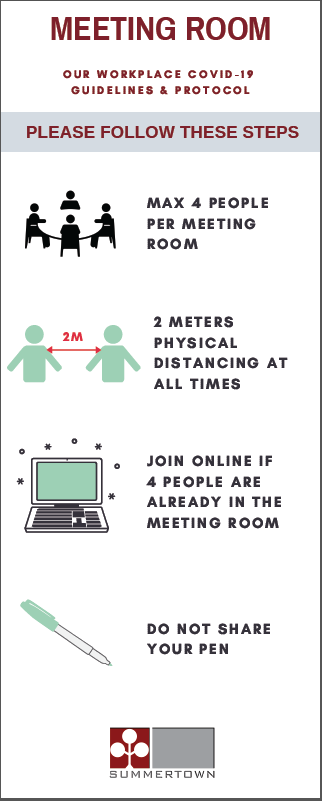 World Mental Health Day aims to raise awareness of mental health, while advocating against its social stigma. First celebrated in 1992, its importance has become increasingly noted as new studies and understandings have allowed us to see mental health as a state that fluctuates in the same way our physical health does. [1] Some studies have even gone further and reported that both mental and physical health are intrinsically linked. [2]
World Mental Health Day aims to raise awareness of mental health, while advocating against its social stigma. First celebrated in 1992, its importance has become increasingly noted as new studies and understandings have allowed us to see mental health as a state that fluctuates in the same way our physical health does. [1] Some studies have even gone further and reported that both mental and physical health are intrinsically linked. [2]
World Mental Health Day provides the opportunity to gain a deeper understanding into mental health, and to propose that it is not a sign of weakness but often a very natural, hard-wired and scientific response to the environment around us. We can learn how to address our own mental health, and nurture it in much the same way you might look to improve your physical health and wellbeing.
Summertown actively advocates a healthy workplace, with an established and award-winning employee health and wellbeing initiatives and programme in place. Our health and wellbeing programme underpins our JOURNEY2030 sustainability goals to ‘improve workplace happiness and wellbeing, and continuously strive to be a great place to work’. We also openly share our ideas and initiatives to help other companies develop their wellness strategies by offering tips on creating healthy workplaces. As it has never been more vital to focus on our mental health, we are going to explore within this article why its former stigma need not affect us anymore, and the importance of employee wellbeing.
Why Employee Wellbeing and Mental Health Is So Important?
The expectation is that employees will go home and be happy, whether that is because they enjoy what they do or because they are simply not at work. However, this is an oversimplified assumption, as mental health is a state of health that we all have, and which can fluctuate between good and poor in the same way physical health can. Both mental and physical health result from external influences; the only difference being that one is more apparent than the other.
We could not reasonably expect an employee with a broken leg to be on their feet all day, and the same can be said for mental health – we cannot expect poor mental health to simply disappear when the work day starts; their work capabilities must instead adapt to suit the employee’s health requirements.
However, poor mental health is potentially easier to address within the workplace than poor physical health, provided the appropriate initiatives are accessible. There has never been a better time to look at wellbeing strategies as the current crisis has highlighted the importance of maintaining good mental health [3] throughout stressful times. Leading companies have found that incorporating employee wellbeing strategies have brought about long-term benefits, [4] and that these mental health-focused initiatives have helped them develop a better approach to the concerns around COVID-19. In this climate of worry and stress, mental health has never been more important, and we are hearing increasingly more about how we can better maintain it.
Dubai based English language newspaper, Gulf News reports that the majority of employees will not share details on their mental health in the UAE for fear of being labelled ‘weak’, [5] thus resulting in a distinct lack of data on mental health in this region. However, another UAE study found that 42% admitted to feeling stressed in their workplace, [6] while less than half believed their company took an interest in their wellbeing. This specific article was back in 2015, long before the pandemic, so we must look at statistics from other countries to get a better idea of the mental health impact the world is currently facing.
American studies show their workforce is 70% more stressed now than ever before in their professional lives, [7] due to their very legitimate concerns associated with COVID-19. In our latest survey, we found that loneliness had become a key issue as a result of the working-from-home initiatives designed to keep employees physically safe. No matter the measures we need to employ to maintain physical safety, we must not forget to address our mental health and wellbeing, as stress, change, and uncertainty are upon us all at this time.
Ultimately, happy employees far outperform stressed staff. Both the individual and their company benefit greatly from happy, healthy employees; while on the other hand, stress, and unhappiness at work lead to poor performance and an unsustainable work life. Providing employee wellbeing initiatives and promoting positive mental health at work will undeniably benefit companies at this present time and beyond.
How do you improve employee wellbeing?
Understanding the importance of employee wellbeing and mental health is one thing – but it is equally important to know how to implement these positive practices within the workplace [8] in order to be of benefit. Below are five methods to get started on for improved employee wellbeing.
1. Encourage Open Communication
Strong co-worker relationships can be a firm basis for a solid mental health environment. Team-building exercises and comfortable break areas can encourage the development of good co-working relationships. Encouraging both management and co-workers to be open and honest with each other [9] further builds rapport, and can help employees feel safer and more supported.
One-to-one chats can be very positive, particularly when trying to ascertain how employees feel about their work, discussing their career trajectory and giving them the opportunity to air any grievances without the social pressure of their workmates around them.
Equally, group chats can be beneficial as issues that may not normally be raised in a one-to-one situation for fear of repercussions, can often come out in situations such as these where they have the support of their colleagues. Having several members of a team agree takes the focus of any one person while highlighting issues that might otherwise have been flagged. These talks can be formal or informal and are often beneficial as the entire group can brainstorm together to directly improve any issues they are experiencing, largely without the need for higher management intervention. Enabling workers to change their workplace also contributes to feelings of empowerment and pride within the working area.
The accessibility of counselling is also a positive, as some may not feel comfortable discussing issues, they are experiencing for fear of how their co-workers or managers may perceive them. Having an environment in which they can talk freely provides an outlet for even healthy people to maintain good mental health, while releasing their concerns without social stigma or judgement.
2. Provide Self-Improvement Opportunities
Self-improvement activities provide a sense of empowerment and achievement. We learn more each day, so that desire to learn is present in all of us and can be channelled in positive ways to improve upon skill sets. If you are unable to provide extra learning opportunities at work, develop a list of free or low-cost online learning, skill-building and fitness activities they are able to join in with could go a long way.
Some companies have group fitness sessions available for their staff, either in-house or remotely. Examples of these are yoga in the workplace, training sessions and team-building activities. Others may want to improve their language skills, whether verbal or written; or they might appreciate the opportunity to try a new skill or to further a passion of theirs. All of this contributes greatly to positive workplace associations and happy, fulfilled employees.
3. Freedom at Work
Giving employees the flexibility to decide when and where they work can make them feel much more in control of their day-to-day lives. This might entail allowing them to take the odd extra-long lunch break on day to head over to the gym and clear their head or create a harmonious work-life balance by enabling them to work around collecting children from school.
Some workers may feel more productive working from home, a coffee shop, library, or a co-working space. Having the freedom to choose, while still delivering on their goals, is a great way to empower your employees and keep their head in a good space. If they are particularly stressed, simply taking a short break from the task to walk around or relax can allow them to return to their task with a clearer head, restored motivation and enhanced productivity.
4. Offer Self-Help Resources and Tools
People can often be unsure about where to find help when they notice their mental health is dipping. They may not feel their issue is serious enough to risk the social stigma, therefore educating employees is important. Letting them know that every one of us has mental health, and that we must maintain in the same way as we maintain physical health, is often a relief to many. Teaching them to utilise resources and self-help checklists will help them address smaller issues before they become a bigger problem or mental disease. As long as they know where to find help to maintain positive mental health, it can be done at their own discretion.
 It is also important to assure employees that it is normal to feel low after returning to work following lockdown, [10] or to be stressed about COVID-19 safety. It is important to provide them with information about how you are prioritising their safety and who they can talk to if they have concerns about anything, be it mental or physical. Providing concise information on what to expect before returning to the office will further reduce their levels of anxiety upon returning.
It is also important to assure employees that it is normal to feel low after returning to work following lockdown, [10] or to be stressed about COVID-19 safety. It is important to provide them with information about how you are prioritising their safety and who they can talk to if they have concerns about anything, be it mental or physical. Providing concise information on what to expect before returning to the office will further reduce their levels of anxiety upon returning.
Offering these resources and tools – or even just information on who to contact – allows the employee to deal with private health matters by themselves if they wish to, without the fear of judgement or perceived ramifications from speaking to staff members.
5. Update Workplace Policies
In light of COVID-19, workplace procedures and policies will have changed significantly. It is important that these are kept up-to-date with the constantly evolving safety measures and laws, but also that your employees are each notified every time these documents are updated.
Appropriate signage also allows employees to feel safer within their workplaces as it encourages everyone – employees and visitors – to adopt COVID-safe procedures within their day-to-day lives. Equally, it shows that your company is operating within the laws of your region and taking your moral duty seriously in that you are keeping everyone safe.
A Worthwhile Investment
Mental health is just as important as physical health and can fluctuate in the same way. This is why the goal of the World Mental Health Day is to reduce the stigma and ensure that everyone keeps on top of their own mental health when life challenges us, and to address issues before they further affect our lives.
While establishing mental health and wellbeing initiatives may be an investment, many leading companies have reported on the multiple long-term benefits that improving their employees’ wellbeing has produced. [4]
Physical exercise improves both mental and physical health, so employee benefits such as gym memberships or discounts could be arranged to tackle both at once. The working environment also contributes to the wellbeing and productivity of staff, so altering the layout and furniture while incorporating plants or biophilia can develop an inspiring atmosphere that staff enjoy being in. The possibilities are endless, and the rewards are worth it.
For further information on how to promote employee wellness and wellbeing, we have several more in-depth articles available on our insights page, including tips on working from home post-COVID. Otherwise, to learn more about the specific workplace and wellbeing options you could adopt during COVID-19 and beyond, please contact us at Summertown.
References:


